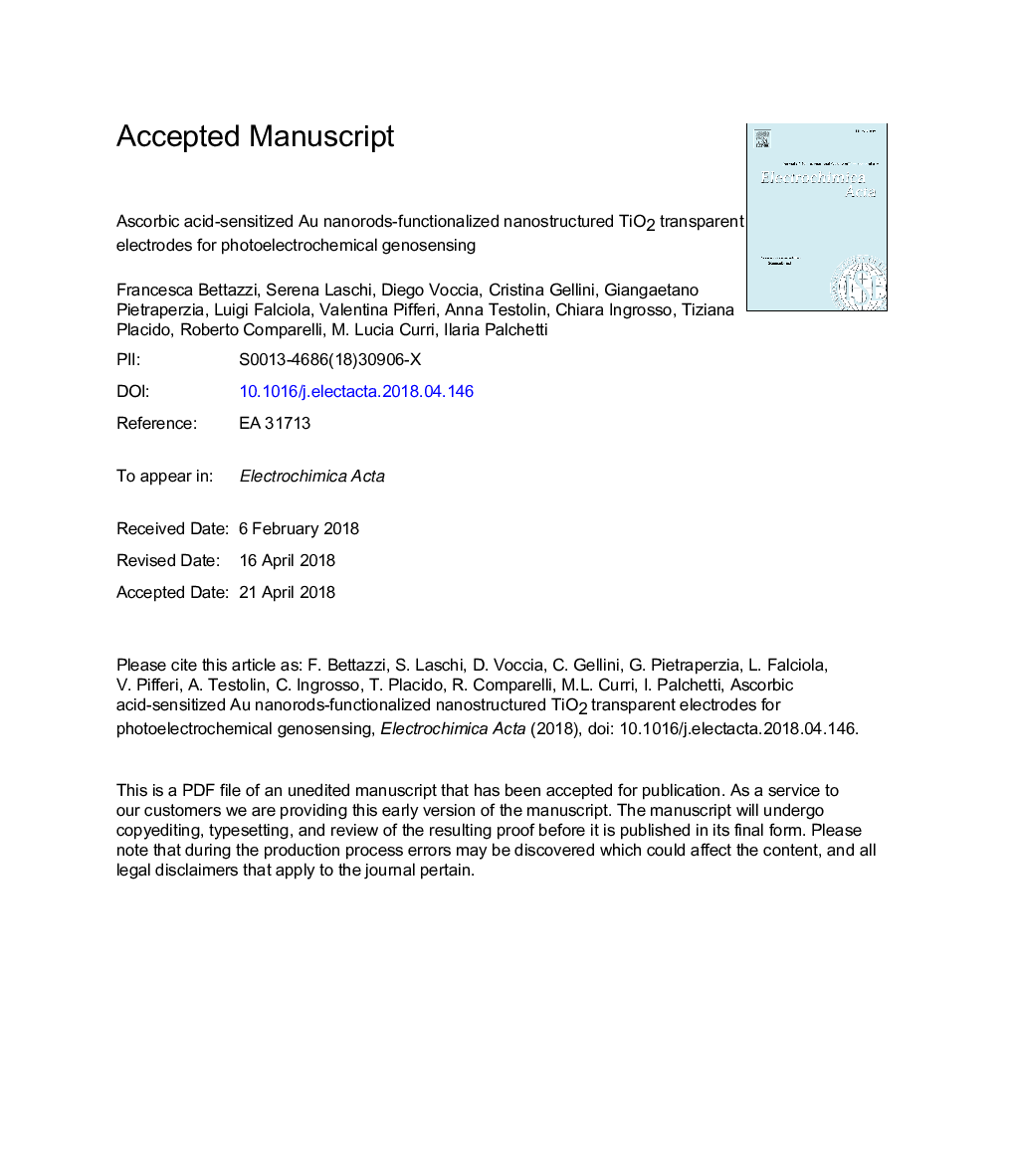| Article ID | Journal | Published Year | Pages | File Type |
|---|---|---|---|---|
| 6602874 | Electrochimica Acta | 2018 | 26 Pages |
Abstract
Au nanorods (NRs) modified nanostructured TiO2/ITO electrodes have been fabricated and characterized in order to develop a biosensing platform for the photoelectrochemical determination of microRNAs. The proposed method is based on the use of thiolated DNA capture-probes (CPs) immobilized onto Au NR surface. The Au NRs are chemically bound at the surface of TiO2/ITO electrodes by means of the mercaptosuccinic acid linker. Subsequently, the DNA CPs are bound to the Au NR surface through the thiolate group, and reacted with the target RNA sequence. Finally, the obtained biosensing platform is incubated with alkaline phosphatase and l-ascorbic acid 2-phosphate (AAP) enzymatic substrate, for the in situ generation of ascorbic acid (AA). Such AA molecule, coordinating to surface Ti atoms, generates a charge transfer complex, that results in a shift of the UV absorption threshold toward the visible spectral region of the nanostructured TiO2 forming the electrode and, hence, in the occurrence of an absorption band centered at 450â¯nm. The photoelectrochemical monitoring of the formation of the AA-TiO2 complex, under the visible light of a commercial LED light source, allows the selective and quantitative detection of the target microRNA strands.
Related Topics
Physical Sciences and Engineering
Chemical Engineering
Chemical Engineering (General)
Authors
Francesca Bettazzi, Serena Laschi, Diego Voccia, Cristina Gellini, Giangaetano Pietraperzia, Luigi Falciola, Valentina Pifferi, Anna Testolin, Chiara Ingrosso, Tiziana Placido, Roberto Comparelli, M. Lucia Curri, Ilaria Palchetti,
